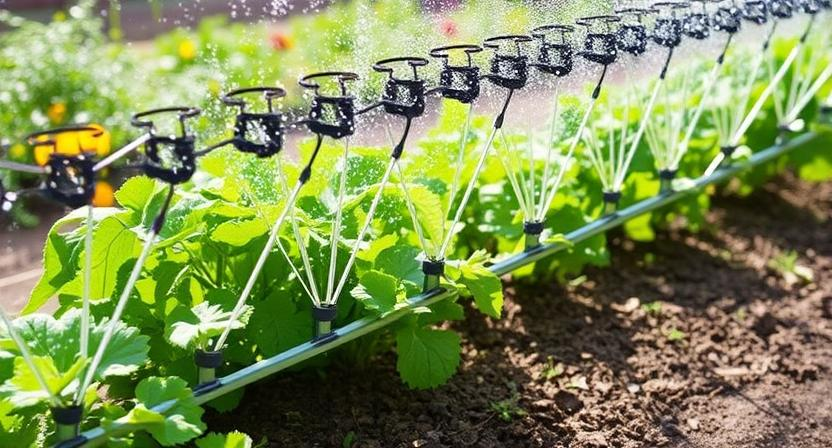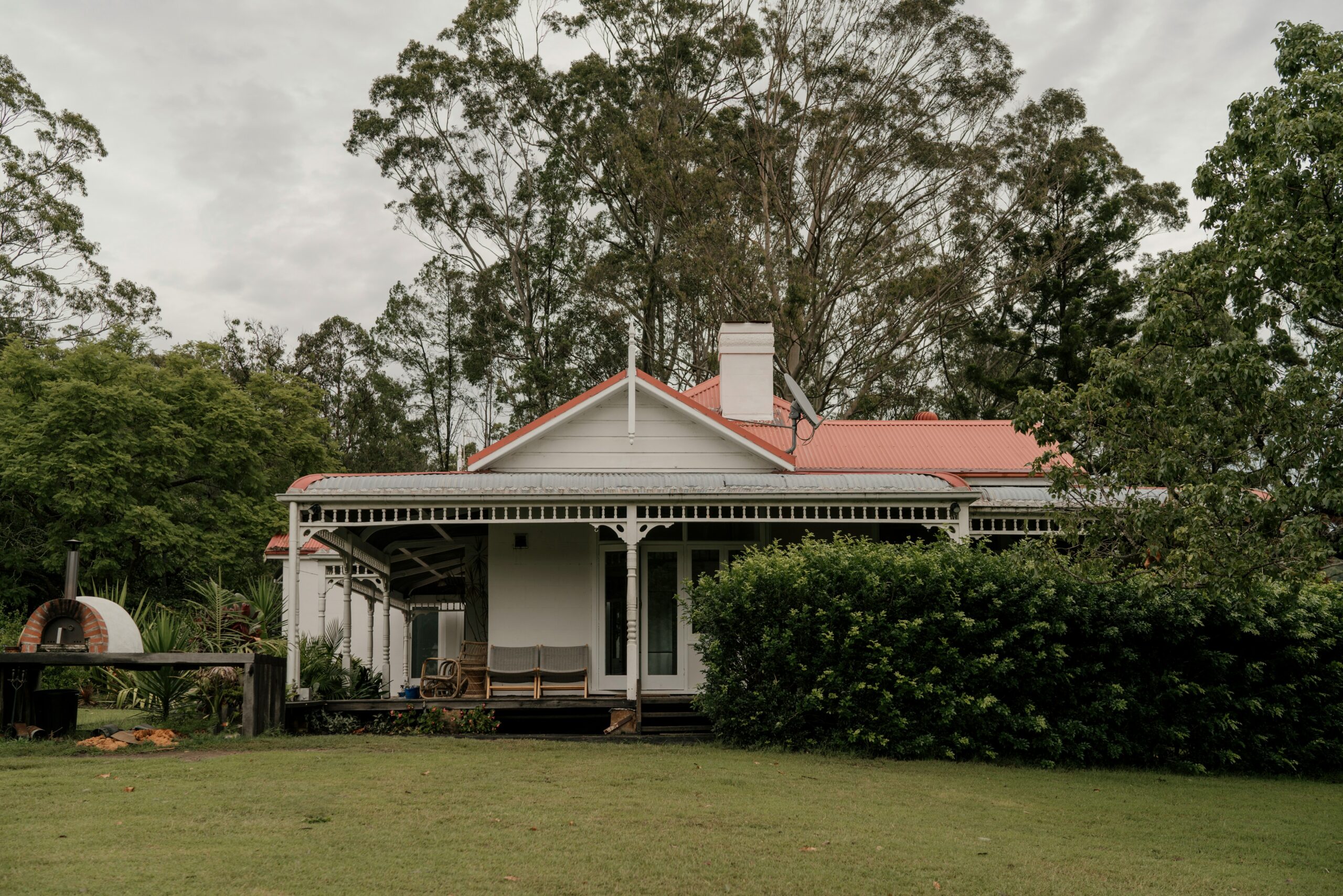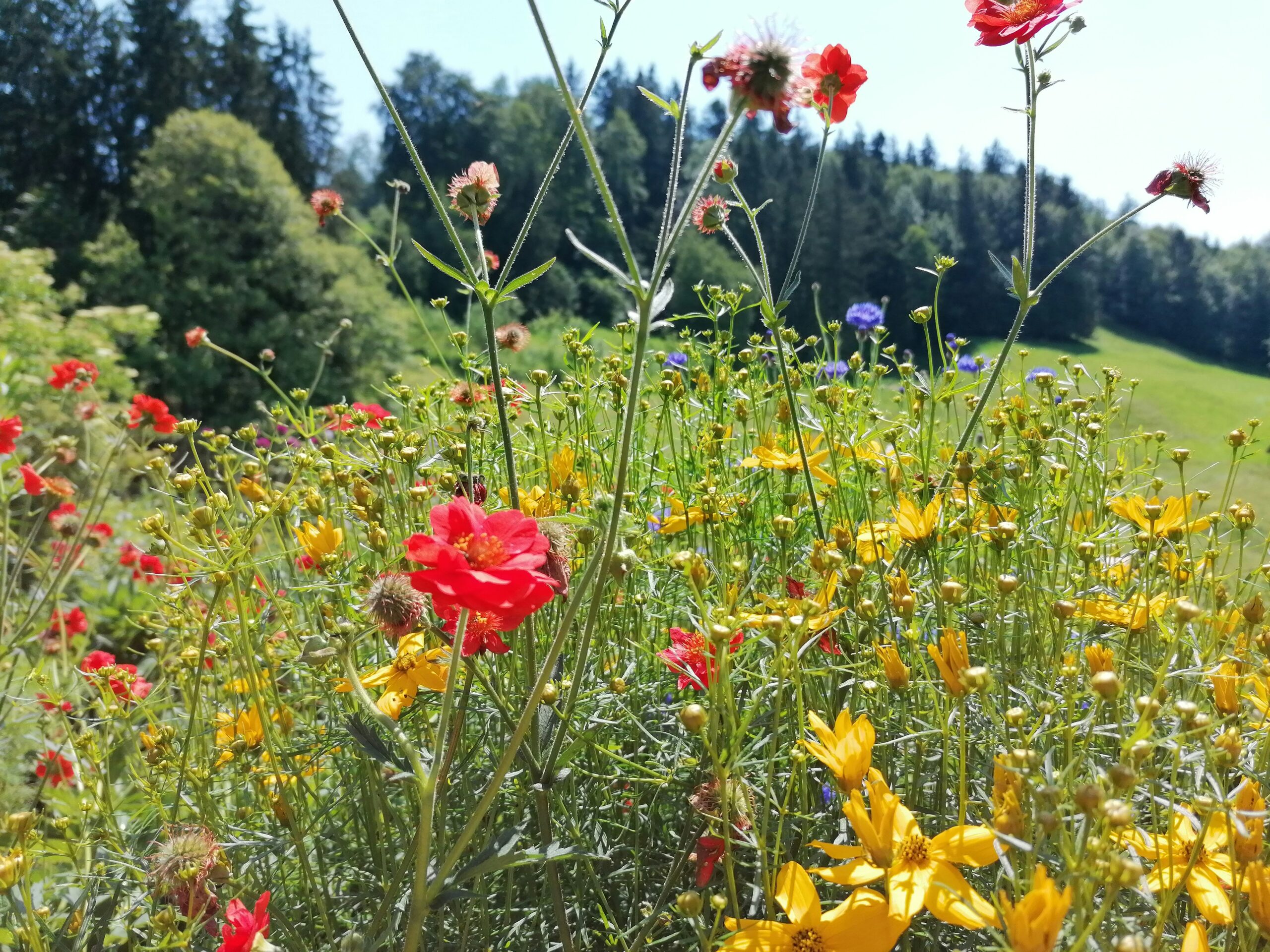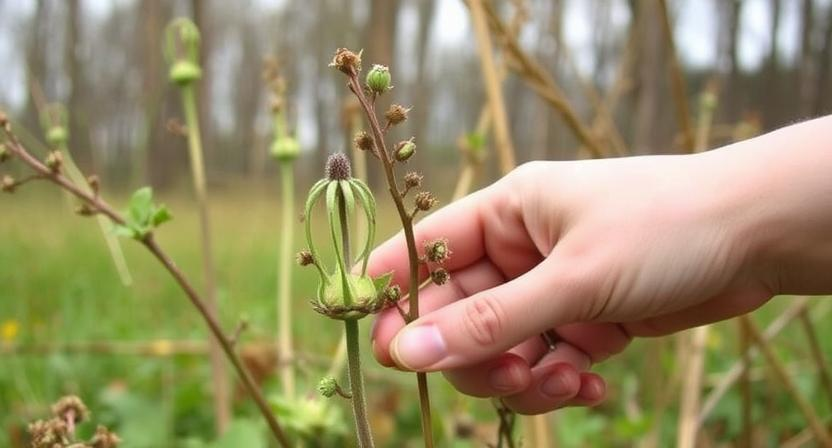DIY Irrigation Systems for Homestead Gardens

Advantages of Installing an Irrigation System for Your Homestead Garden

One significant advantage of installing an irrigation system in your homestead garden is the convenience it provides in watering your plants. With an irrigation system in place, you can automate the watering process, saving you time and effort. This ensures that your garden receives a consistent and adequate amount of water, promoting healthy plant growth.
Another benefit of having an irrigation system is the efficient use of water. By delivering water directly to the root zone of plants, irrigation systems minimize water wastage through evaporation or runoff. This not only helps in conserving water but also leads to cost savings in the long run. Additionally, by providing the right amount of water at the right time, an irrigation system can help prevent under or over-watering, ensuring optimal plant health and productivity in your homestead garden.
• By automating the watering process, an irrigation system saves time and effort
• Ensures consistent and adequate water supply for healthy plant growth
• Minimizes water wastage through evaporation or runoff
• Leads to cost savings in the long run by conserving water
• Prevents under or over-watering by providing the right amount of water at the right time
Different Types of Irrigation Systems for Homestead Gardens
When it comes to irrigating your homestead garden, there are various types of irrigation systems to choose from. One of the most common systems is the traditional sprinkler system, which evenly distributes water across the garden. This type of system is relatively easy to install and is suitable for gardens with a mix of flowers and vegetables.
Another popular option is the drip irrigation system, which delivers water directly to the roots of plants through a network of tubes and emitters. This system is highly efficient as it reduces water waste and minimizes evaporation. Drip irrigation is ideal for gardens with plants that have specific water requirements or for areas with water restrictions.
• Traditional sprinkler system evenly distributes water across the garden
• Easy to install and suitable for gardens with a mix of flowers and vegetables
• Drip irrigation system delivers water directly to plant roots through tubes and emitters
• Highly efficient, reduces water waste, minimizes evaporation
• Ideal for plants with specific water requirements or areas with water restrictions
Factors to Consider Before Choosing an Irrigation System
When deciding on an irrigation system for your homestead garden, it is essential to consider the size of your garden. Larger gardens may require a more complex system that can efficiently water all areas, while smaller gardens may be adequately served by simpler irrigation methods. Assessing the layout of your garden, including any slopes or uneven terrain, is crucial in determining the type of system that will work best for your specific needs.
Another factor to consider is the water source available to you. If you have access to a reliable water supply, you may have more flexibility in choosing a system. However, if water availability is limited, you may need to opt for a more water-efficient irrigation method such as drip irrigation. Additionally, considering the climate and weather patterns in your area can help determine the best system to ensure your garden receives adequate water without wastage.
• The size of your garden is a crucial factor in choosing an irrigation system
• Assess the layout of your garden, including any slopes or uneven terrain
• Consider the water source available to you before selecting a system
• Climate and weather patterns in your area should also be taken into account
Steps to Designing an Effective Irrigation System for Your Garden
To start designing an effective irrigation system for your garden, the first step is to assess your garden’s layout and topography. Take note of areas that receive more sunlight or are prone to drying out faster, as these spots may need more frequent watering. Additionally, consider the types of plants you have and their individual water needs, as this will help determine the distribution and quantity of water required for each section of the garden.
After assessing your garden, the next step is to determine the water source for your irrigation system. Whether you plan to connect to a municipal water supply, use a well, or harvest rainwater, it’s crucial to ensure that your chosen water source can meet the demands of your garden. Consider factors such as water pressure, flow rate, and water quality when selecting a water source to ensure efficient and effective irrigation for your garden.
• Assess your garden’s layout and topography
• Note areas that receive more sunlight or dry out faster
• Consider the types of plants and their water needs
• Determine the water source for your irrigation system
• Connect to a municipal water supply, use a well, or harvest rainwater
• Ensure chosen water source can meet the demands of your garden
Materials Needed for Installing an Irrigation System
When it comes to installing an irrigation system for your homestead garden, there are several essential materials that you will need to have on hand. Firstly, you will require PVC pipes in various lengths, diameters, and fittings to create the main pipeline network for water distribution. Additionally, you’ll need connectors, elbows, and tees to join the pipes together and navigate around obstacles in your garden layout.
Another key material needed for installing an irrigation system is a reliable water source, whether it be from a well, municipal supply, or rainwater harvesting system. Depending on the type of irrigation system you choose, you may also need sprinkler heads, drip emitters, or soaker hoses to deliver water to your plants efficiently. Lastly, don’t forget to stock up on tools such as pipe cutters, PVC cement, and a shovel to assist with the installation process.
• PVC pipes in various lengths, diameters, and fittings
• Connectors, elbows, and tees for joining pipes together
• Reliable water source (well, municipal supply, or rainwater harvesting system)
• Sprinkler heads, drip emitters, or soaker hoses for water delivery
• Tools such as pipe cutters, PVC cement, and a shovel
How to Calculate Water Requirements for Your Homestead Garden

When determining the water requirements for your homestead garden, several factors come into play. These include the type of plants you are growing, the prevailing climate in your region, the soil type, and the size of your garden. Understanding these factors is crucial in ensuring that your plants receive adequate water without wastage.
To calculate the water requirements for your garden, start by identifying the water needs of each type of plant you have. This information can usually be found on plant tags or online resources. Next, consider the evapotranspiration rate in your area, which is the amount of water lost to evaporation and plant transpiration. By factoring in these variables, you can determine a watering schedule that aligns with your garden’s specific needs, promoting healthy plant growth and efficient water usage.
• When determining water requirements for your homestead garden, consider the following factors:
◦ Type of plants being grown
◦ Prevailing climate in your region
◦ Soil type
◦ Size of your garden
• Start by identifying the water needs of each type of plant you have:
◦ This information can be found on plant tags or online resources
• Consider the evapotranspiration rate in your area:
◦ This is the amount of water lost to evaporation and plant transpiration
• By factoring in these variables, you can determine a watering schedule that aligns with your garden’s specific needs:
◦ Promoting healthy plant growth
◦ Efficient water usage.
Tips for Efficiently Watering Your Garden with an Irrigation System
When setting up your irrigation system, it’s essential to group plants with similar water needs together in zones. This zoning approach allows for a more efficient use of water as you can tailor the irrigation schedule to the specific requirements of each zone. By dividing your garden in this way, you can avoid overwatering some areas while ensuring that all plants receive the appropriate amount of moisture.
Additionally, regularly inspect and maintain your irrigation system to prevent leaks, clogs, or misalignments that can lead to water waste and inefficient watering. Check for any issues with the system’s components, such as nozzles, hoses, or pipes, and make necessary repairs or replacements promptly. Proper maintenance not only ensures that your plants receive adequate water but also extends the longevity of your irrigation system.
• Group plants with similar water needs together in zones
• Tailor irrigation schedule to specific requirements of each zone
• Avoid overwatering some areas while ensuring all plants receive appropriate moisture
• Regularly inspect and maintain irrigation system
• Check for leaks, clogs, or misalignments
• Repair or replace components like nozzles, hoses, or pipes promptly
Proper maintenance not only ensures that your plants receive adequate water but also extends the longevity of your irrigation system. By following these tips for efficiently watering your garden with an irrigation system, you can help conserve water and promote healthy plant growth.
Common Mistakes to Avoid When Installing an Irrigation System
When installing an irrigation system in your homestead garden, it is important to avoid some common mistakes that can lead to inefficiencies and potential issues in the future. One common mistake to avoid is not properly planning out the layout of your irrigation system. Without a well-thought-out plan, you may end up with areas of your garden that are overwatered while others are not receiving enough water, leading to uneven plant growth and potential water wastage.
Another mistake to steer clear of is underestimating the water pressure and flow requirements of your irrigation system. Insufficient water pressure can result in poor water distribution and coverage, affecting the effectiveness of your system. It is crucial to accurately assess the water needs of your garden and ensure that your irrigation system is designed to meet those requirements for optimal plant growth and health.
• Not properly planning out the layout of the irrigation system
• Underestimating water pressure and flow requirements
• Poor water distribution and coverage due to insufficient water pressure
• Uneven plant growth and potential water wastage from overwatering some areas
Benefits of Drip Irrigation Systems for Homestead Gardens
Drip irrigation systems offer numerous benefits for homestead gardens. One advantage is their efficiency in delivering water directly to the roots of plants, minimizing wastage through evaporation or runoff. This targeted watering helps conserve water and promotes healthier plant growth by ensuring each plant receives the necessary moisture it needs without excess water pooling on the surface.
Additionally, drip irrigation systems can be customized to fit the layout of your garden, allowing for precise control over water distribution. This flexibility enables you to adjust the system based on the specific needs of different plants, ensuring optimal watering levels for various crops and soil types. By reducing water usage and improving plant health, drip irrigation systems can ultimately lead to higher yields and more successful harvests in your homestead garden.
• Drip irrigation systems deliver water directly to plant roots, minimizing wastage
• Conserves water by reducing evaporation and runoff
• Promotes healthier plant growth by providing necessary moisture without excess pooling on the surface
• Customizable to fit garden layout for precise control over water distribution
• Adjust system based on specific needs of different plants for optimal watering levels
• Reduces water usage and improves plant health, leading to higher yields in homestead gardens.
How to Install a Drip Irrigation System in Your Garden
Drip irrigation systems are an efficient way to ensure that your garden receives the right amount of water without wastage. To install a drip irrigation system in your garden, you first need to plan out the layout of your garden beds to determine where the tubing will need to run. Once you have a layout in mind, you can start by connecting the main water supply to a filter and pressure regulator to ensure that your system runs smoothly.
Next, lay out the tubing along the base of your plants, securing it in place with stakes or clips. Make sure to place emitter heads close to each plant or along the length of the tubing at appropriate intervals for even water distribution. Once the tubing is in place, connect it to the main water supply line, making sure all connections are secure and leak-free. Finally, test the system to ensure that water is flowing correctly to all parts of your garden before burying any exposed tubing to protect it from damage and ensure a tidy appearance.
• Plan out the layout of your garden beds
• Connect the main water supply to a filter and pressure regulator
• Lay out tubing along the base of plants, securing with stakes or clips
• Place emitter heads close to each plant for even water distribution
• Connect tubing to main water supply line securely
• Test system to ensure proper water flow in all parts of the garden
Maintenance Tips for Keeping Your Irrigation System in Good Condition

Regular maintenance is essential for keeping your irrigation system in good condition. One important task is to regularly check for any leaks in the system. Leaks can not only waste water but also prevent your garden from receiving adequate irrigation. By inspecting the system for leaks and promptly repairing them, you can ensure the efficient operation of your irrigation system.
Another maintenance tip is to clean the filters and nozzles of your irrigation system regularly. Over time, debris and mineral deposits can accumulate in these components, leading to clogs and reduced water flow. By cleaning the filters and nozzles periodically, you can prevent clogs and ensure that your plants receive the proper amount of water. Regular cleaning also helps to extend the lifespan of your irrigation system components.
• Regularly check for leaks in the system
• Promptly repair any leaks to ensure efficient operation
• Clean filters and nozzles regularly to prevent clogs
• Remove debris and mineral deposits to maintain proper water flow
• Extend the lifespan of irrigation system components by regular cleaning
Water Conservation Strategies for Homestead Gardens
Water conservation is a crucial aspect of maintaining a sustainable homestead garden. Implementing simple strategies can make a significant difference in the amount of water used while keeping your plants healthy. One effective method is mulching, which helps retain soil moisture and reduce evaporation. Organic materials such as straw, wood chips, or leaves can be used as mulch to cover the soil around plants, preserving moisture levels and promoting root growth.
Another water-saving technique is to group plants with similar water needs together in the garden. By creating specific irrigation zones based on the water requirements of different plants, you can ensure that each area receives the appropriate amount of water without wastage. This targeted approach not only conserves water but also helps plants thrive by providing them with the ideal conditions for growth.
• Mulching helps retain soil moisture and reduce evaporation
• Organic materials like straw, wood chips, or leaves can be used as mulch
• Group plants with similar water needs together in the garden
• Create specific irrigation zones based on water requirements
• Ensure each area receives appropriate amount of water without wastage
Using Rainwater Harvesting in Conjunction with Your Irrigation System
Rainwater harvesting can be a valuable addition to your irrigation system, providing a sustainable and eco-friendly water source for your homestead garden. By collecting rainwater from your roof or other surfaces, you can reduce your dependence on municipal water sources and lower your water bills. This practice not only conserves valuable resources but also helps in managing stormwater runoff, preventing erosion, and reducing the load on local water systems during dry periods.
Integrating rainwater harvesting into your irrigation system is relatively straightforward. You can set up a rain barrel or a more elaborate rainwater collection system to capture and store rainwater for later use in watering your garden. By incorporating a filtration system to remove debris and a pump to distribute the water through your irrigation system, you can efficiently utilize rainwater to keep your garden healthy and thriving without putting a strain on the environment.
– Rainwater harvesting is a sustainable and eco-friendly water source
– Reduces dependence on municipal water sources and lowers water bills
– Helps in managing stormwater runoff, preventing erosion, and reducing load on local water systems during dry periods
– Setting up a rain barrel or collection system can capture and store rainwater for later use in watering your garden
– Incorporating a filtration system to remove debris and a pump to distribute the water through your irrigation system efficiently utilizes rainwater
How to Incorporate a Timer into Your Irrigation System
Timing is crucial when it comes to watering your garden effectively. By incorporating a timer into your irrigation system, you can automate the watering process and ensure that your plants receive the right amount of water at the optimal times. A timer allows you to schedule watering sessions based on the specific needs of your plants, helping you conserve water and promote healthy growth.
To incorporate a timer into your irrigation system, start by selecting a timer that suits your garden’s requirements. There are various types of timers available, including mechanical, digital, and smart timers. Consider factors such as the size of your garden, the number of zones you have, and the watering schedule you prefer. Once you have chosen a timer, follow the manufacturer’s instructions to install it properly in line with your irrigation system. Adjust the settings on the timer according to your garden’s watering needs, and regularly monitor and fine-tune the schedule to ensure optimal performance.
• Mechanical timers are simple to use and cost-effective, but may have limited features
• Digital timers offer more customization options and flexibility in scheduling
• Smart timers can be controlled remotely via smartphone apps, allowing for convenient adjustments
• Consider weather conditions and seasonal changes when setting your watering schedule
• Regularly check the timer for any malfunctions or leaks to prevent water wastage
Creating a Zoning Plan for Your Garden Irrigation System
Zoning your garden for an irrigation system involves dividing the area into different sections based on water needs. Identifying plants with similar watering requirements is crucial for efficient irrigation. Grouping together plants that thrive with less water will help avoid overwatering and underwatering, ensuring optimal growth and health of your garden.
When creating zones, consider factors such as sun exposure, soil type, and plant size in addition to water requirements. Plants in shaded areas may need less water compared to those in full sun, while sandy soil will drain faster than clay soil, affecting how much water each zone requires. By taking these variables into account, you can tailor the irrigation schedule for each zone to meet the specific needs of your garden plants.
– When zoning your garden for an irrigation system, consider the following factors:
– Sun exposure
– Soil type
– Plant size
– Group plants with similar watering needs together to avoid overwatering or underwatering.
– Tailor the irrigation schedule for each zone based on specific plant requirements.
– Efficient zoning can lead to optimal growth and health of your garden.
Troubleshooting Common Issues with Irrigation Systems

When faced with issues in your irrigation system, it is important to diagnose the problem accurately before moving on to the solution. One common issue is low water pressure, which can be caused by clogged filters, leaks in the system, or a malfunctioning pump. Check all components of the system, from the main water source to the valves and sprinkler heads, to pinpoint the source of the pressure drop.
Another common problem gardeners encounter is uneven water distribution. This can lead to some plants receiving too much water while others are left parched. To address this issue, check for clogged or misaligned sprinkler heads, ensure proper spacing between emitters in a drip system, and adjust the flow rate of each watering zone if necessary. Regular maintenance and observation of your irrigation system can help prevent these issues from occurring in the future.
• Low water pressure can be caused by clogged filters, leaks, or a malfunctioning pump
• Check main water source, valves, and sprinkler heads to pinpoint the issue
• Uneven water distribution may result in some plants receiving too much water while others are left parched
• Check for clogged or misaligned sprinkler heads and ensure proper spacing between emitters in a drip system
• Adjust flow rate of each watering zone if necessary
• Regular maintenance and observation can help prevent future issues
How to Winterize Your Irrigation System
As the gardening season comes to an end and temperatures drop, it’s important to prepare your irrigation system for the winter months ahead. One crucial step in winterizing your irrigation system is to fully drain all water from the pipes to prevent freezing and potential damage. Start by turning off the water supply to the system and opening all the valves to release any remaining water.
After draining the water from the system, it’s essential to protect your irrigation components from the harsh winter elements. Insulate above-ground pipes and valves with foam insulation sleeves or towels to prevent them from freezing. Additionally, consider covering above-ground components with insulated wraps or blankets to provide an extra layer of protection. By taking these precautionary measures, you can ensure that your irrigation system remains in good condition and ready for use when the warmer weather returns.
• Turn off the water supply to the system
• Open all valves to release any remaining water
• Drain all water from the pipes
• Insulate above-ground pipes and valves with foam insulation sleeves or towels
• Consider covering above-ground components with insulated wraps or blankets
Upgrading Your Irrigation System for Better Performance
When it comes to enhancing the efficiency and effectiveness of your garden irrigation system, upgrading certain components can make a significant difference. One simple upgrade that can improve performance is replacing older sprinkler heads with more modern, water-efficient models. These updated sprinkler heads can distribute water more evenly and effectively across your garden, ensuring optimal hydration for your plants.
Additionally, consider installing a pressure regulator to maintain consistent water pressure throughout your irrigation system. Fluctuating water pressure can lead to uneven watering and potential damage to your plants. By incorporating a pressure regulator, you can stabilize the water flow and ensure that each section of your garden receives the appropriate amount of water for healthy growth.
• Upgrading sprinkler heads to more modern, water-efficient models
• Installing a pressure regulator for consistent water pressure
• Ensuring even distribution of water across the garden
• Preventing potential damage to plants from fluctuating water pressure
Incorporating Smart Technology into Your Garden Irrigation System
Smart technology has revolutionized the way we manage our homestead gardens, including irrigation systems. By incorporating smart technology into your garden irrigation system, you can achieve more precise control over watering schedules and amounts, leading to healthier plants and increased water efficiency. Smart irrigation systems can be programmed to adjust watering based on real-time weather data, soil moisture levels, and plant requirements, taking the guesswork out of maintaining an optimal watering regime.
One of the key advantages of integrating smart technology into your garden irrigation system is the ability to remotely monitor and control the system through a smartphone or computer. This feature allows you to make adjustments to your watering schedule from anywhere, ensuring that your garden receives the right amount of water even when you are not at home. Additionally, some smart irrigation systems offer water usage tracking, helping you to better understand and manage your water consumption for a more sustainable gardening approach.
• Smart technology revolutionizes the management of garden irrigation systems
• Achieve more precise control over watering schedules and amounts
• Real-time adjustments based on weather data, soil moisture levels, and plant requirements
• Remote monitoring and control through smartphone or computer
• Make adjustments to watering schedule from anywhere
• Water usage tracking for better understanding and management of water consumption
Final Thoughts on DIY Irrigation Systems for Homestead Gardens
In conclusion, implementing a DIY irrigation system in your homestead garden can be a rewarding and cost-effective way to maintain a thriving oasis of plants and vegetables. By taking the time to research the different types of irrigation systems available, carefully considering your garden’s unique needs, and following the steps to design and install an efficient system, you can enjoy the benefits of reduced water waste and improved plant health.
Remember to regularly check and maintain your irrigation system to ensure it continues to function optimally. By incorporating water conservation strategies, such as rainwater harvesting and smart technology, you can further enhance the efficiency and sustainability of your garden irrigation system. With proper care and attention, your DIY irrigation system can help you achieve a lush and flourishing garden while conserving water resources for the future.
• Regularly check and maintain your irrigation system
• Incorporate water conservation strategies like rainwater harvesting
• Utilize smart technology to enhance efficiency
• With proper care, achieve a lush and flourishing garden
• Conserve water resources for the future




